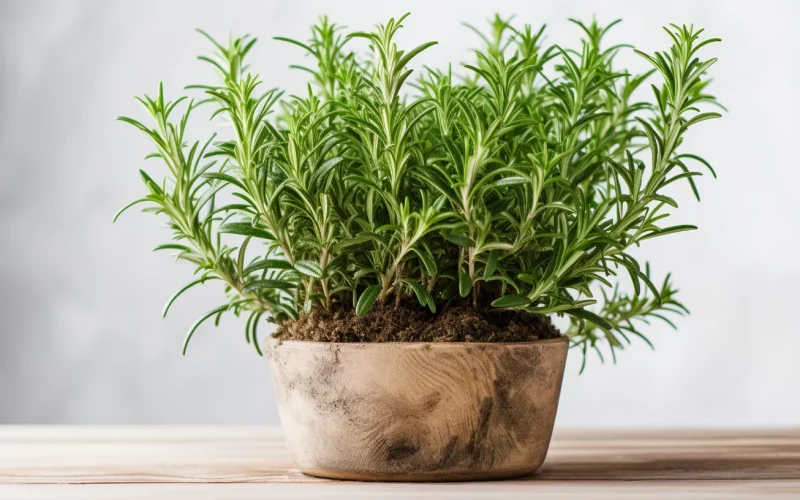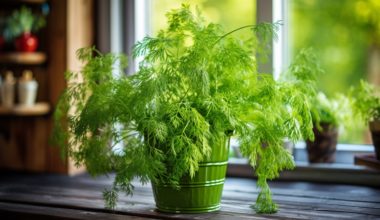Rosemary is a versatile herb known for its aromatic fragrance and culinary uses. While it’s commonly grown outdoors, you can also enjoy the delights of fresh rosemary by growing it indoors. Whether you have limited outdoor space or simply want to have this wonderful herb within reach throughout the year, growing rosemary indoors is a rewarding endeavor. In this guide, we will explore the step-by-step process of successfully cultivating rosemary indoors. Get ready to infuse your home with the delightful scent and flavors of this beloved herb!
Why Grow Rosemary Indoors?
Growing rosemary indoors offers a range of benefits, making it an appealing choice for herb enthusiasts. Here are a few reasons to consider growing rosemary indoors:
- Year-Round Availability: By growing rosemary indoors, you can enjoy a fresh supply of this flavorful herb all year round, regardless of the weather outside. No more waiting for the growing season or relying on dried rosemary from the store.
- Convenience and Accessibility: Having rosemary readily available in your kitchen provides convenience and easy access when cooking. You can harvest the leaves as needed, ensuring the maximum flavor and fragrance in your dishes. Say goodbye to dried rosemary and welcome the vibrant flavors of freshly picked herbs.
- Control Over Growing Conditions: Indoor gardening allows you to have greater control over the growing environment. You can adjust factors such as temperature, humidity, and light to create the optimal conditions for your rosemary plants. This control results in healthier growth and more robust flavors.
- Decorative and Fragrant: Rosemary plants not only offer culinary benefits but also serve as attractive indoor decorations. Their fragrant foliage adds a pleasant aroma to your living space, creating a soothing and refreshing ambiance.
Growing Rosemary Indoors: Step-by-Step Guide
Follow these steps to successfully grow rosemary indoors and enjoy the aromatic presence of this versatile herb:
Step 1: Choosing a Suitable Location
Select a sunny spot for your rosemary plants. Ideally, they require at least six hours of direct sunlight per day. Place your pots near a south-facing window or use supplemental grow lights to ensure sufficient light levels.
Step 2: Acquiring Rosemary Plants
Obtain rosemary plants from a reputable nursery or start from seeds. Consider purchasing well-established plants to expedite the growing process. Choose compact and healthy plants with vibrant green leaves and sturdy stems.
Step 3: Preparing the Containers
Select well-draining containers with sufficient depth to accommodate the root system. Terracotta or clay pots are excellent choices as they allow for proper airflow. Ensure the containers have drainage holes to prevent waterlogging.
Step 4: Potting Mix and Planting
Use a well-draining potting mix suitable for herbs. You can create a mix by combining equal parts of regular potting soil, perlite, and coarse sand. Fill the containers with the potting mix, leaving about an inch of space below the rim. Gently remove the rosemary plant from its nursery pot and place it in the container, ensuring the soil level matches the previous planting depth. Fill the remaining space with the potting mix, gently pressing it around the plant’s base.
Step 5: Watering and Moisture
Water the rosemary plants thoroughly after planting. Allow the top inch of the soil to dry out between waterings. Avoid overwatering, as rosemary prefers slightly drier conditions. Before watering, check the moisture level by inserting your finger into the soil. If it feels dry, it’s time to water. Ensure proper drainage by emptying excess water from the saucer or tray.
Step 6: Pruning and Maintenance
Regular pruning helps maintain the shape and compactness of your rosemary plants. Pinch off the tips to encourage bushier growth and prevent legginess. Harvest sprigs as needed, starting from the top, to promote continual growth and maintain a healthy plant. Remove any dead or yellowing leaves to keep your rosemary plants looking vibrant.
Step 7: Providing Optimal Conditions
Rosemary thrives in well-ventilated areas with good air circulation. Maintain a temperature range of 65-80°F (18-27°C). Keep in mind that rosemary prefers slightly cooler temperatures at night. Maintain moderate humidity levels, as excessive humidity can lead to fungal diseases. Consider using a humidifier during dry winters or placing the pots on a tray filled with pebbles and water.
Step 8: Fertilizing
Feed your rosemary plants with a balanced liquid fertilizer once every 4-6 weeks during the growing season. Dilute the fertilizer according to the package instructions and apply it to the soil. Avoid overfertilizing, as it can lead to excessive growth and reduced flavor intensity.
Conclusion
Growing rosemary indoors is a wonderful way to have this versatile herb at your fingertips throughout the year. By following this guide, you can successfully cultivate and enjoy the aromatic presence of rosemary in your home. Whether you use it for cooking, aroma, or decoration, the fresh flavors and fragrances of homegrown rosemary are sure to enhance your culinary experiences. Start your indoor rosemary garden today and savor the rewards of this exceptional herb!






